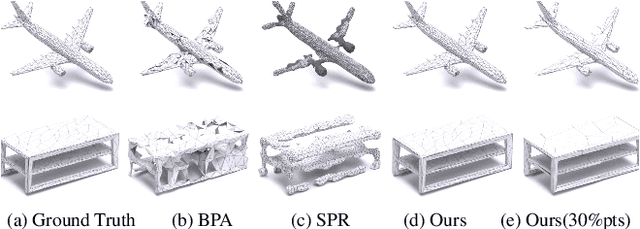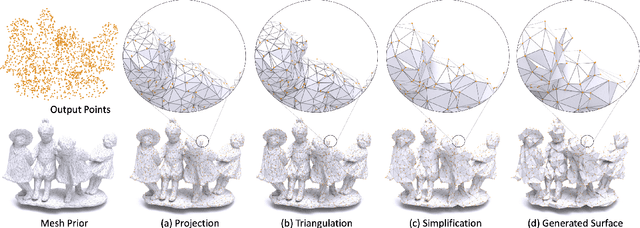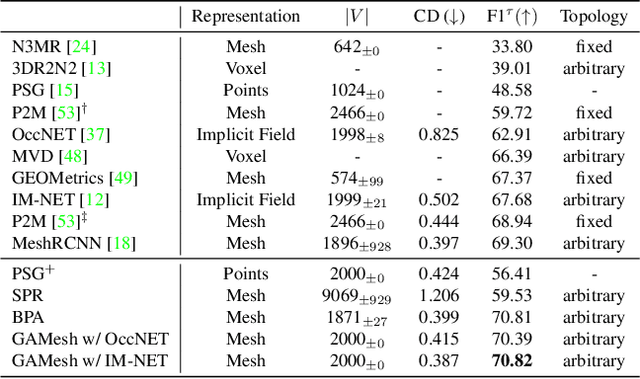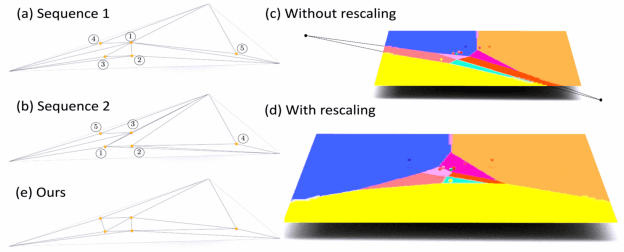GAMesh: Guided and Augmented Meshing for Deep Point Networks
Paper and Code
Oct 19, 2020



We present a new meshing algorithm called guided and augmented meshing, GAMesh, which uses a mesh prior to generate a surface for the output points of a point network. By projecting the output points onto this prior and simplifying the resulting mesh, GAMesh ensures a surface with the same topology as the mesh prior but whose geometric fidelity is controlled by the point network. This makes GAMesh independent of both the density and distribution of the output points, a common artifact in traditional surface reconstruction algorithms. We show that such a separation of geometry from topology can have several advantages especially in single-view shape prediction, fair evaluation of point networks and reconstructing surfaces for networks which output sparse point clouds. We further show that by training point networks with GAMesh, we can directly optimize the vertex positions to generate adaptive meshes with arbitrary topologies.
 Add to Chrome
Add to Chrome Add to Firefox
Add to Firefox Add to Edge
Add to Edge